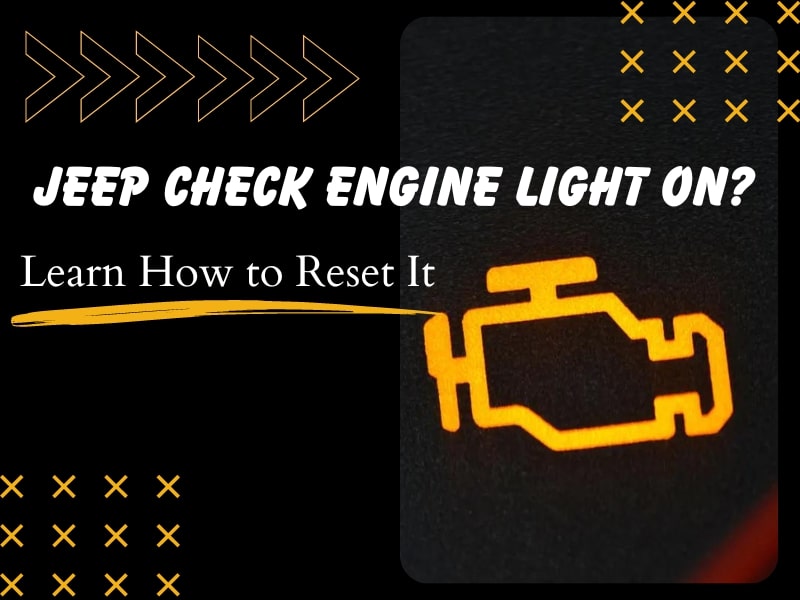The check engine light in your Jeep can be a cause for concern, but it doesn’t always mean that there’s a major issue with your vehicle. In fact, sometimes the light can be triggered by a simple issue that can be easily resolved.
One way to address this problem is by resetting the check engine light. However, many Jeep owners may not know how to do this, which is why we’ve put together this guide to help you reset the check engine light in your Jeep. In this article, we’ll cover some basic steps you can take to reset the check engine light and get back on the road with confidence.
Understanding the Check Engine Light
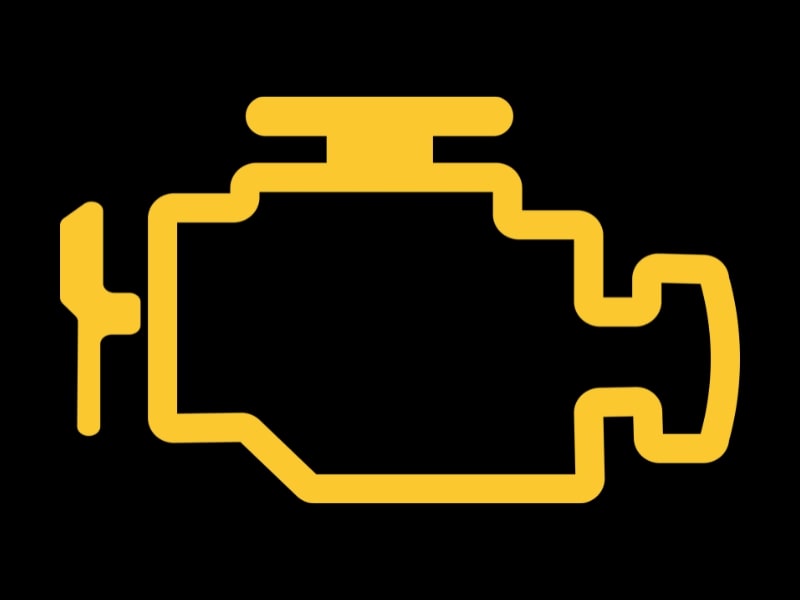
This is an important indicator of your Jeep’s engine condition and should not be ignored. It is important to understand how the Check Engine Light works, so you can take the appropriate steps to take in order to fix the issue and reset the light.
In this article, we’ll look at the various reasons why the Check Engine Light may activate, and how you can reset it.
What are the common causes of the check engine light?
It is a warning signal that something is wrong with the engine management system. It can cause a drop in performance, as well as a declining fuel economy when the issue persists and is not resolved. The most common reasons for the check engine light to be illuminated are:
-A loose or faulty gas cap
-A faulty oxygen sensor
-An exhaust system leak causing an unmetered air leak
-Common problems with catalytic converters
-There may be a misfire condition with one of your cylinders due to an incorrect spark plug gap, bad spark plug, or bad coil pack.
Other common causes of the check engine light include:
-Incorrect ignition timing
-Exhaust pressure sensor failure
-Engine coolant temperature sensor issue
-Mass airflow sensor failure
-A malfunctioning solenoid or other related components in fuel injection systems
Taking your vehicle to a technician and having them run an engine diagnostic code scan and view live data feed could help narrow down what parts may be causing the check engine light to activate. When you bring it into your local repair shop, it’s important you provide as much information about what you have done to try and reset the car’s computer before getting professional assistance.
Resetting the Check Engine Light
Depending upon the cause of the light being triggered, the reset process may differ.
In this section, we are going to explore the ways you can reset the check engine light on a Jeep. We will explore the different ways to reset the light and discuss their advantages and disadvantages.
Disconnect the battery
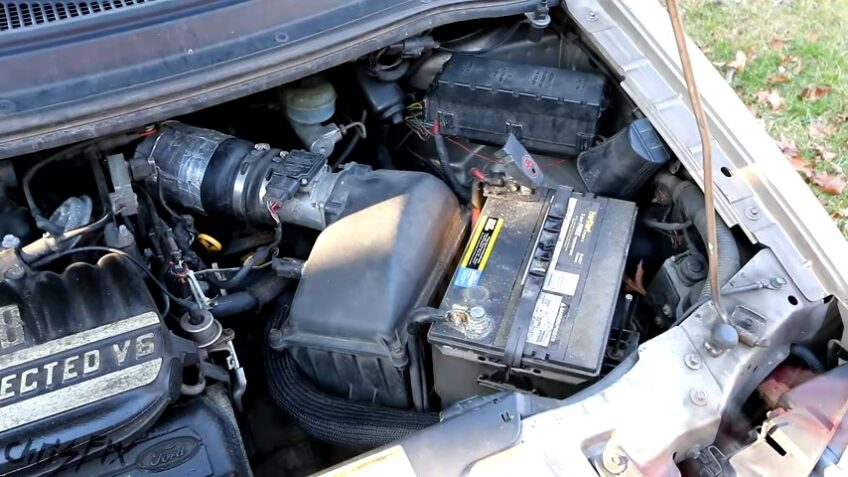
It is important to note that this reset requires an appropriate amount of time for the power to clear and for the computer system to reset itself.
To begin, open the hood and locate your Jeep’s battery. Remove the red positive cable first and then remove the black negative terminal cable from the battery using a wrench. If your Jeep has multiple positive cables, start with spark plug cables or injector cables first then remove other connections as necessary.
Leave your battery disconnected for about 10 minutes in order for its capacitors to drain any saved energy. After waiting, reattach both cables starting with the black cable followed by the red cable, and reclose or replace all caps or covers you had opened.
With these quick steps, your car’s check engine light should be reset!
Use an OBD-II scanner
An OBD-II scanner is designed to plug into a car’s or truck’s diagnostic port in order to retrieve trouble codes and other data from the vehicle’s computer. It can also be used to erase codes from the computer, resetting it in the process.
When choosing an OBD-II scanner for your Jeep, it’s important to make sure it is compatible with your model and the year of the vehicle. Some higher-end scanners have code readers that interpret live data streams, allowing you to quickly diagnose problems with your vehicle as they arise.
Using an OBD-II scanner is generally a pretty simple process, but some vehicles may require specific procedures in order to reset the check engine light after repairs have been completed. Always follow manufacturer instructions when using these tools and be sure to refer to any technical documents included with your scanner before attempting any repairs on your own.
Check the gas cap
A loose gas cap can trigger the Jeep’s onboard diagnostic system (OBD) and cause the check engine light to come on. To reset a Jeep’s OBD try the following steps:
- Check that your Jeep’s gas cap is properly tightened.
- Turn off the ignition and inspect any loose connectors or sensors in the engine bay.
- If necessary, repair or replace any broken or worn parts in your Jeep.
- Turn your key to “on” without starting the Jeep and wait for three seconds before turning it off again, doing this two or three times depending on the make and model of your vehicle.
- Start up your vehicle, if necessary, and look to see if the “check engine” light will self-reset – you may need to drive your vehicle for several miles in order for it to self-reset successfully. If it does not reset after several miles of driving, try disconnecting and reconnecting both ends of the battery cables with a 10mm wrench for one minute then start up again – this should erasure any stored fault codes from memory which will allow for a successful reset of you Jeep’s OBD system.
- Finally, get an emissions test from a local garage or car dealership just in case – no matter whether you have success resetting your “check engine” light manually or not, further diagnostics may still be needed as other issues could be present with your car’s computer system which can only be tested at an automotive service shop.
Depending on the make and model of the vehicle, two or three turns on/off may be required before attempting step 4. Further information can be found at How To Reset The Check Engine Light In Your Vehicle.
Preventive Maintenance
Preventive maintenance is a great way to keep your Jeep running smoothly and prevent costly engine problems from occurring. One important part of this is regularly checking for and resetting the “check engine” light.
To do this you will need to turn off your engine, disconnect the battery, and then reconnect it after a few seconds. In this article, we’ll go through the steps to reset your Jeep check engine light.
Check your vehicle’s oil and coolant levels
Performing general maintenance on your vehicle is one of the best ways to prevent check engine light notifications. Make sure to check your vehicle’s oil levels every 3,000 miles or at least once every 3 months. You should also check the coolant levels of your car as part of this routine. Simply look at the coolant gauge or use a dipstick, if available, and add additional coolant if needed.
Be careful to continue filling until you reach the full line marked on the tank or else you risk damaging other components such as your water pump. Checking and topping up oil and coolant levels regularly prevents liquids from becoming too low, which can lead to more serious engine issues that cause warning lights on the dashboard.
Check your air filter and spark plugs
One of the first and simplest things you should do to reset the check engine light in your Jeep is to check and replace any clogged or dirty air filters. A clogged air filter will reduce the amount of oxygen reaching your engine, resulting in poor performance and leading to a higher possibility of needing repairs that could set off the check engine light.
You should also make sure to regularly check and clean the spark plugs in your vehicle. Spark plugs need to be in optimum condition for car engines to run properly, so ensuring that all spark plug connections are free of debris or corrosion can help you prevent potential issues and avoid having your check engine light come on unnecessarily.
Make sure your tires are properly inflated
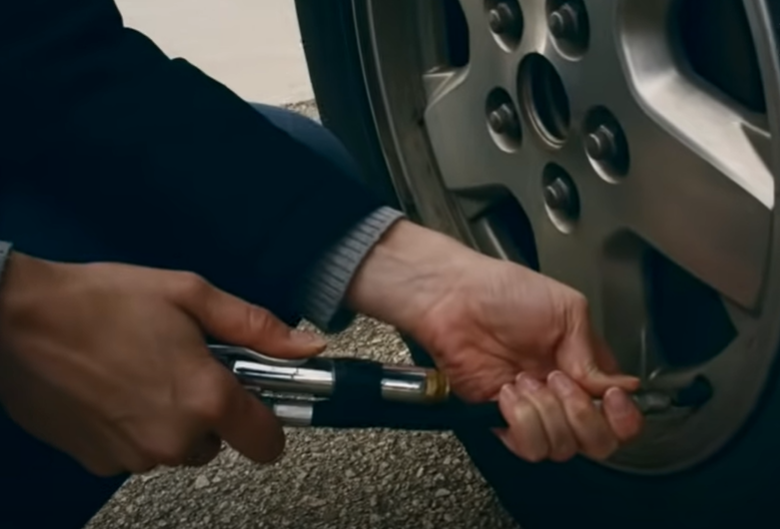
A light check engine can be attributed to a variety of causes, from an accumulation of dirt or dust on the air filter to an oxygen sensor malfunction. It’s important to remember that a routinely maintained car will run more efficiently and be more reliable in the long term, thus preventing certain problems from happening in the first place.
Before troubleshooting your vehicle, it is important that you make sure your tires are properly inflated – tire pressure should match the manufacturer’s recommended pounds per square inch (PSI). Low tire pressure is a common trigger for a check engine light because it reduces tire life and affects engine efficiency, as it requires more fuel to adequately power the vehicle.
In addition, many modern cars have sensors in their tires that track overall performance and may trigger the check engine light if they detect an issue.
Troubleshooting
Resetting the check engine light in a Jeep can be a surprisingly easy process if you know what you’re doing. However, if you don’t know how to do it, it can become a long and tedious process.
This section will explore the basics of troubleshooting the check engine light in a Jeep. We’ll cover the potential causes of the light, how to reset it, and more.
Check for any loose connections
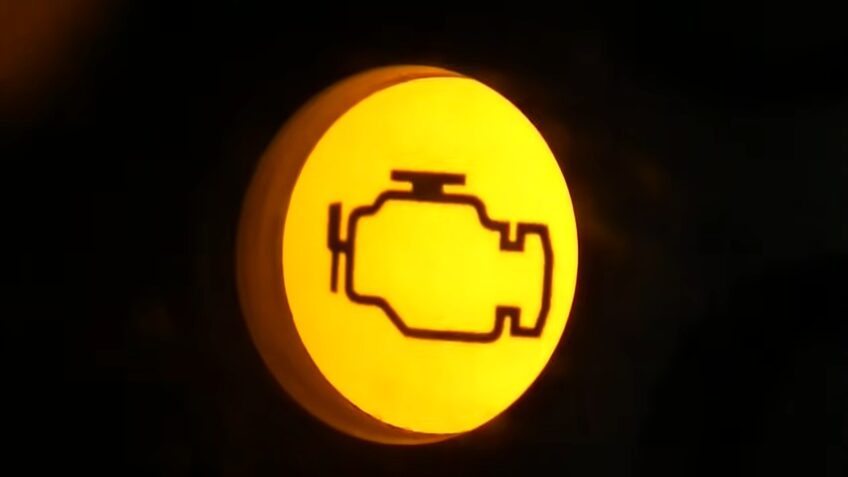
It is important to check for any loose connections when troubleshooting a Jeep check engine light. Loose connections within the electrical system can lead to erratic behavior and eventually cause the check engine light to turn on.
Start by visually inspecting all of the wirings in and around the engine bay, particularly any connections that are near the ECU (engine control unit) or other electrical modules. Make sure all of these connectors are properly tightened and securely connected. Also, test every connection against their respective ground point.
If you find any evidence of corrosion or wear-and-tear, proceed to clean them off with a wire brush before re-attaching them securely back in place. Be sure you unplug any battery cable before attempting this inspection process as safety should always be your primary concern when dealing with automotive electrical wiring.
Inspect the exhaust system
Before you jump head-first into resetting your Jeep check engine light, it’s important to follow a few preliminary steps. Since most of them are triggered by the exhaust system, start with a thorough visual inspection of the exhaust system.
Inspect for signs of wear and tear such as visible signs of rust and corrosion, disconnected piping or tubing connections, or loose clamps or hangers. Also, check for visible signs that would indicate an exhaust leak such as air bubbles appearing in liquids (like antifreeze) and pieces of missing foam insulation from the pipes.
If you notice any sign of damage or malfunctioning parts, replace them before doing any further resetting processes.
Have a professional inspect your vehicle
In the event that you are unable to repair your Jeep check engine light on your own, you can always have a professional inspect the vehicle. They will be able to thoroughly search and diagnose the problem, as well as perform repairs if necessary.
Make sure to find an experienced and knowledgeable mechanic who can accurately identify and fix any problems within your vehicle that could be causing the engine light. A qualified technician should begin by using a scan tool in order to identify any problems with the vehicle’s components, including the manifold absolute pressure sensor, oxygen sensor, spark plugs, or MAP sensors. This will allow them to better understand what is causing the warning light and what needs to be done in order to fix it.
FAQs
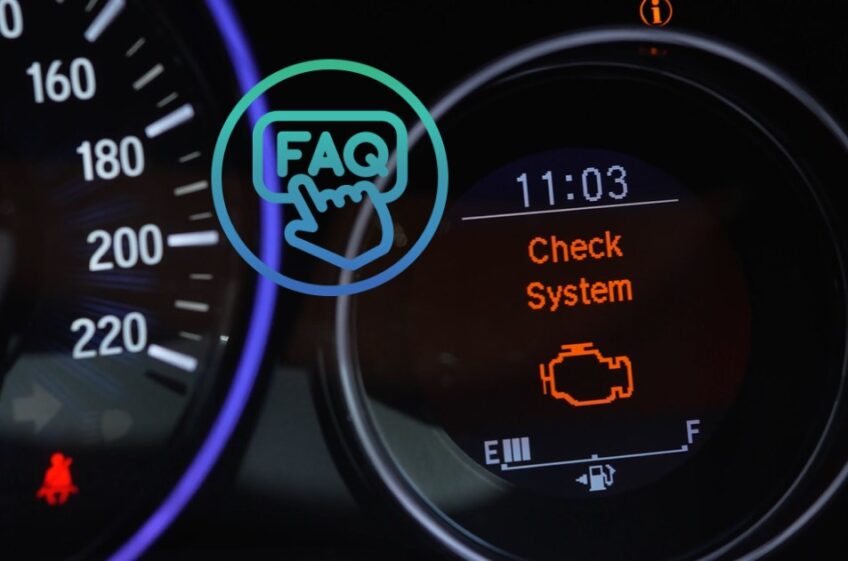
What should I do if the check engine light comes back on after I reset it?
If it comes back on after you reset it, it’s important to have your Jeep diagnosed by a professional mechanic to determine the root cause of the problem.
Do I need any special tools to reset the check engine light in my Jeep?
No, you do not need any special tools to reset it in your Jeep.
Will resetting the check engine light erase any diagnostic trouble codes?
Yes, resetting it will erase any diagnostic trouble codes that were stored in your Jeep’s computer.
How often should I reset the check engine light in my Jeep?
You should only reset it if you have ruled out any major issues and are confident that there is no underlying problem.
Can a low battery cause the check engine light to come on in my Jeep?
Yes, a low battery or other electrical issues can sometimes cause it to come on in your Jeep.
What are some common reasons why the check engine light might come on in my Jeep?
Common reasons include issues with the oxygen sensor, catalytic converter, or spark plugs.
Do I need to disconnect both battery terminals to reset the check engine light in my Jeep?
No, you only need to disconnect the negative battery terminal to reset it.
Is it safe to continue driving my Jeep if the check engine light is on?
If it is a minor issue, it may be safe to continue driving your Jeep. However, if the issue is more serious, it’s best to have it addressed as soon as possible to prevent any further damage.
Conclusion
Resetting the check engine light in your Jeep can be a simple and straightforward process, but it’s important to understand that it’s not always a permanent solution. If there is an underlying issue with your vehicle, the check engine light may come back on after a short period of time. In these cases, it’s best to have your Jeep diagnosed by a professional mechanic to determine the root cause of the problem. However, if you’ve ruled out any major issues and the light is still on, resetting it can give you peace of mind and prevent unnecessary worry. By following the steps outlined in this article, you can easily reset the check engine light in your Jeep and get back on the road with confidence.

